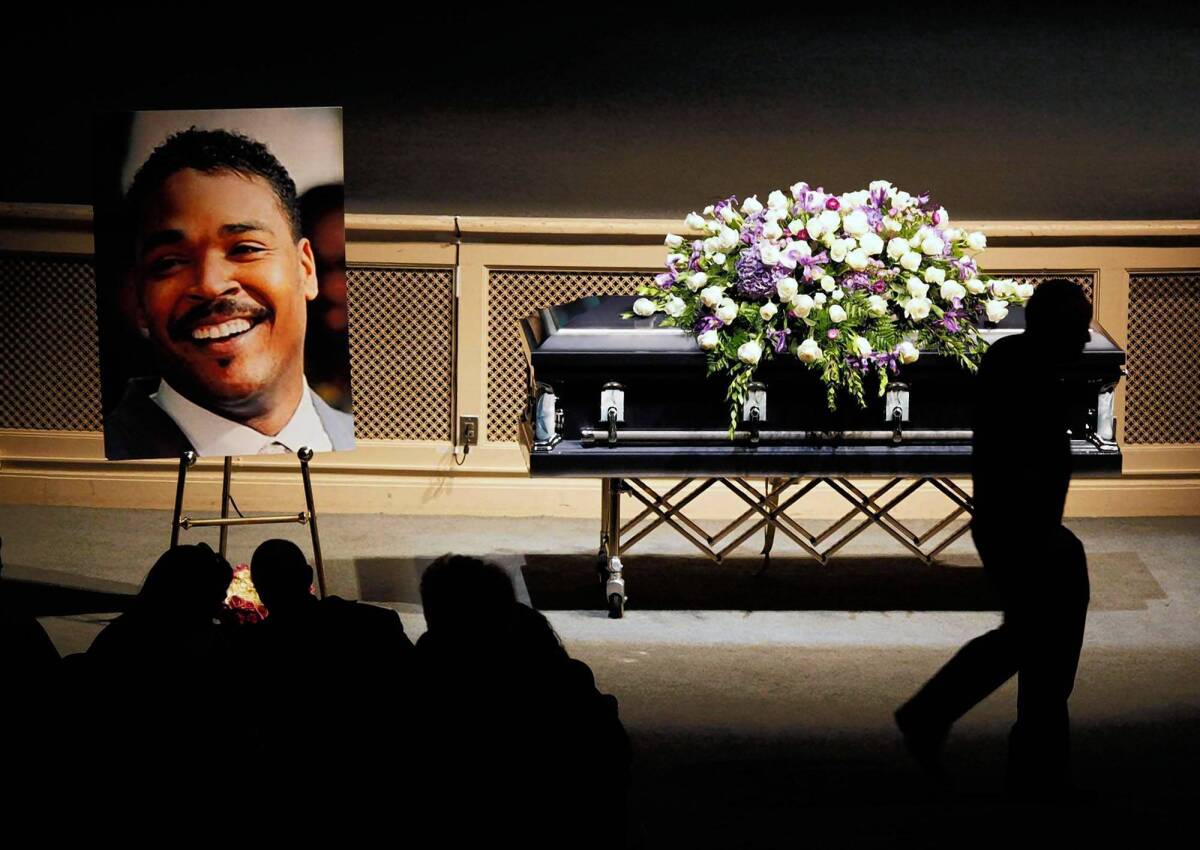Drugs contributed to Rodney King’s death, coroner concludes

- Share via
Rodney King’s struggles with addiction thrust him into public consciousness more than two decades ago, as a drunk driver bludgeoned by Los Angeles police. In June the same affliction led to his death, medical examiners have concluded.
King, an avid swimmer, drowned in the pool of his Rialto home in the early morning of June 17 after slipping into a “state of drug and alcohol-induced delirium,” according to a San Bernardino County coroner’s report released Thursday.
His death was deemed accidental. Coroner’s officials said drugs and alcohol, combined with his enlarged heart, likely triggered an irregular heartbeat that incapacitated him after he fell or jumped into his backyard pool. Along with alcohol, toxicology tests found traces of marijuana, PCP and cocaine.
Before his death at 47, King described himself as a recovering addict, but he had not stopped drinking and had secured a doctor’s clearance to use medical marijuana. Last year he appeared on VH1’s “Celebrity Rehab,” trying to tackle his fight with alcoholism.
“People who combat chemical abuse, they go backward from time to time,” Ontresicia Averette, one of King’s closest cousins, said Thursday.
Averette said one of the saddest aspects of King’s death was that he was unable outrun his past drug use even at a time when his life was looking brighter. His recently published book, “The Riots Within,” led to tours and a measure of financial security, after he had largely squandered his financial settlement with the Los Angeles Police Department. Averette said coroner’s officials told her Wednesday that some of the drugs in his system were in minuscule amounts.
“The levels of substances in his body were not enough to cause a death or drowning, and they had no way of determining whether those substances were put into his body that night or earlier in time,” she said. “They could only conclude that maybe his body built up some sort of toxicity and he went into paralysis.”
Before his death, Rodney King spent the night and early morning hours drinking and smoking marijuana at his house with a close friend and his fiancee, Cynthia Kelley. Kelley, who told police she was only drinking alcohol, said she had gone to bed and was awakened just before 5:30 a.m., when King, in the backyard alone, started pounding on the sliding glass door and screamed “Baby come and help me!”
“She described him making grunting and growling sounds and having frothy secretions coming from his mouth,” according to the coroner’s investigative report. “The subject at that time was wearing his underwear down around his knees and then apparently fell backwards onto the planter … just east of the sliding glass door.”
When Kelley went back into the house to call 911, she heard a splash, the report stated. Kelley told police she was not a good swimmer, so she tried to arouse King from the bottom of the pool by jabbing him with a pitchfork and a hoe, the report stated.
Kelley declined to comment Thursday.
A neighbor, Sandra Gardea, 31, said she heard King sobbing uncontrollably in his backyard, apparently after he had been up all night, and heard Kelley trying to coax him into the house.
“It wasn’t like an argument,” Gardea said the day King died. “She was just saying, ‘Get in the house. Get in the house.’ ”
Then there was silence, said Gardea, whose bedroom window faces King’s house. A few minutes later, Gardea said, she heard a splash.
To many, King became a symbol of the years of troubled relations between the LAPD and minorities. His 1991 beating, captured on video and seen worldwide, helped lead to 1992’s deadly riots in Los Angeles, which sparked after the officers who beat him were acquitted of criminal charges. He was awarded a $3.8-million settlement, but the money and fame brought him little solace. Charges of drunk driving and evading police were dropped, although King admitted he had been drinking.
The autopsy report released Thursday, in dry clinical detail, told the tale of his scarred life. Buckshot was buried in his scalp, leftovers from a shotgun blast in 2007. X-rays revealed the facial fractures he suffered when, high on PCP, King crashed his car into a house in 2003. And, of course, the healed wounds from that day in 1991.
More to Read
Sign up for Essential California
The most important California stories and recommendations in your inbox every morning.
You may occasionally receive promotional content from the Los Angeles Times.














